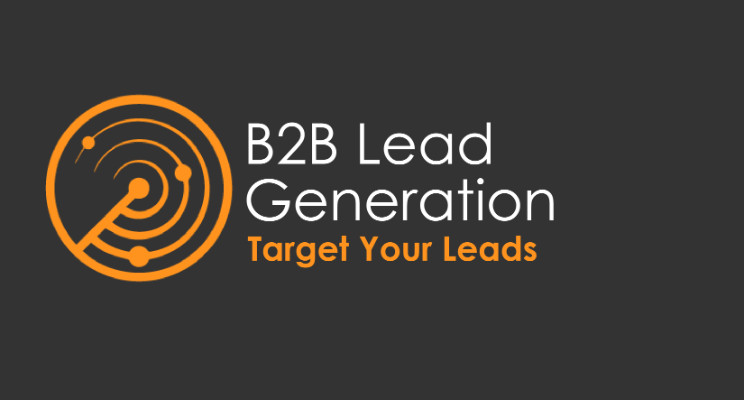Looking for B2B Lead Generation? Uncover the Secrets Here!
Having a hard time growing your sales funnel from quarter to quarter? Is your newsletter list growing slower than you’d like? Has the registration page for a free trial period of using the service been looking like a desert lately?
You are in the right place. This article offers three lead generation tactics that can help any B2B business, SaaS company, or service provider get results.
What is lead generation in B2B?
B2B lead generation is the practice of collecting contact information from potential customers to then sell solutions, whether in service delivery, SaaS tools, or online commerce. This definition holds true for lead generation for small businesses, B2B brands, accounting firms, construction companies, business coaches, and so on. If you’re seeking expert assistance in enhancing your lead generation efforts, consider collaborating with a reputable B2B Lead Generation Agency for impactful results.
Lead generation and demand generation- What is the difference?
The goal of demand creation is to pique people’s interest in your offering. It’s your responsibility to acquaint people with your brand and include them in your universe. To boost sales and profitability, other actions will be needed in addition to creating demand. Lead creation is useful in this situation.
So you’ve introduced people to your brand and brought them to your website. The next step is to convert these visitors into leads so that they can then purchase your product.
Attracting attention is not enough; it will not affect your profits. You need to create a lead generation system that will turn interested visitors into potential clients.
What are the best lead generation methods in B2B?
Here are the top tactics that will allow you to convert website visitors into leads.
Create a simple template/checklist/table
One of the popular misconceptions in B2B lead generation is that “Simple lead magnets don’t work in B2B.” Too many marketers and corporate business leaders believe that it is necessary to create:
- A technical white paper with a ton of jargon to prove they “know their stuff”
- A manual of more than 100 pages, in which a specific topic is described in detail
- A business case implemented from start to finish, which takes three months to prepare
It can not be said that such tools are useless and should not be created. White papers still make a difference in some areas, detailed guides are great for demonstrating your expertise, and business cases definitely help with lead generation.
But here’s the thing: creating these tools takes time, which is often in short supply.
And when B2B marketers don’t have the time to develop one of the above lead generation tools, they too often decide to do nothing at all. All this is entered into the project reserve and lies untouched until the next quarter.
The good news is that you don’t have to create a lead-generation tool that will revolutionize your industry.
You can simply create:
- A checklist that will help your ideal clients solve a problem more effectively
- A table template that will save them the time they would otherwise spend creating their own table from scratch
- A plan that will help your audience navigate the organization of the project
Creating these objects will take much less time than writing a technical white paper or a detailed manual. You may already have an internal version of a document like this that you use daily and could turn into a free template for your audience.
Development and launch of a free tool or calculator
You can take your lead generation strategy to the next level and develop an interactive tool or calculator that your ideal clients can use.
The approach is quite similar to the first tactic: find a problem your audience is facing and offer a free solution.
Basically, you can go to a site where designers and developers share the tools they create, and try searching for “calculators” or “generators” to see which products are the most popular:
You can ask site visitors to leave you their email addresses so you can send them the results of using your free tool.
It is advised to start with a checklist/template/sheet to make sure the problem you’re trying to solve is something your customers actually care about. If such a resource starts to gain popularity, you can be sure that an interactive tool that solves this problem will pay for itself.
Create a retargeting campaign on LinkedIn and Facebook
If people visit any page on your site, that’s a good sign. This means that they were interested in something you posted. And if users come to your “money” pages (requesting a demo, order forms, shopping cart, pricing, free tool results, etc.), that’s a very good sign. Even if they don’t convert instantly, visiting such a “money” page is a sign of intent.
One of the best ways to do this is to use a retargeting campaign.
Retargeted advertising targets specific people who behaved in a certain way – in our case, those who visited a specific page on your website. For example, if someone comes to your page to request a demo but doesn’t complete the checkout process, you can create a targeted ad campaign on Facebook or LinkedIn to try to motivate them to schedule a call with your experts. Looking to boost your outreach further? Consider partnering with a top-tier linkedin lead generation agency for unparalleled results.
Conclusion
In the dynamic landscape of B2B enterprises, sustaining growth demands effective lead generation. However, recognizing the complexity and time constraints, businesses may find immense value in relying on professional lead generation agencies.

